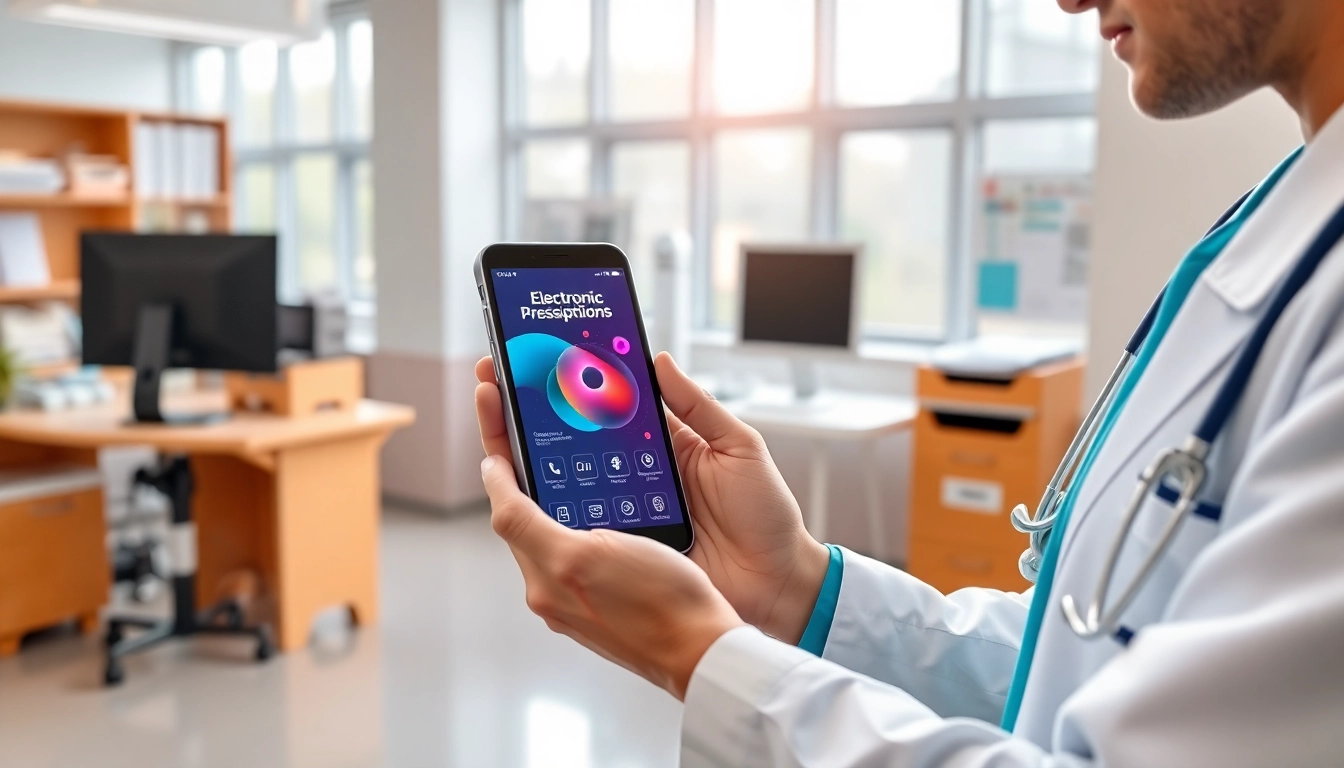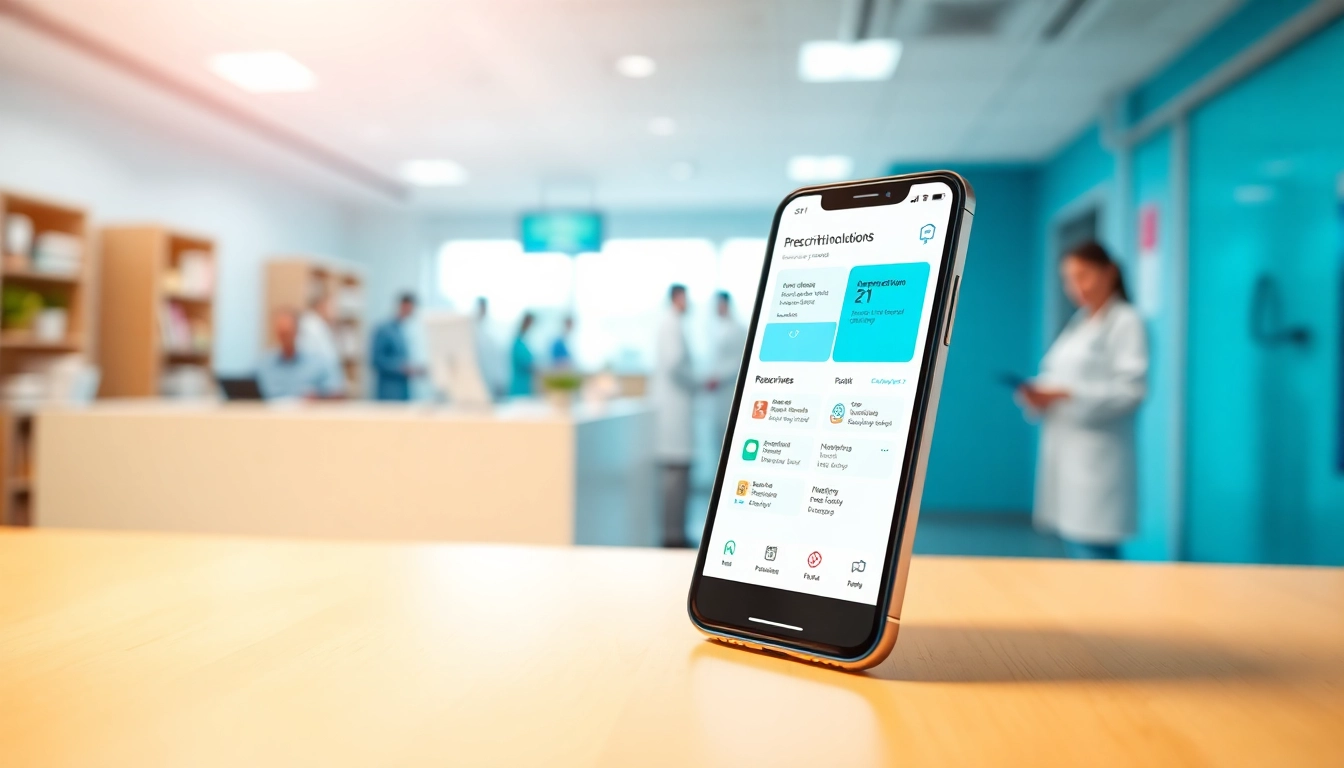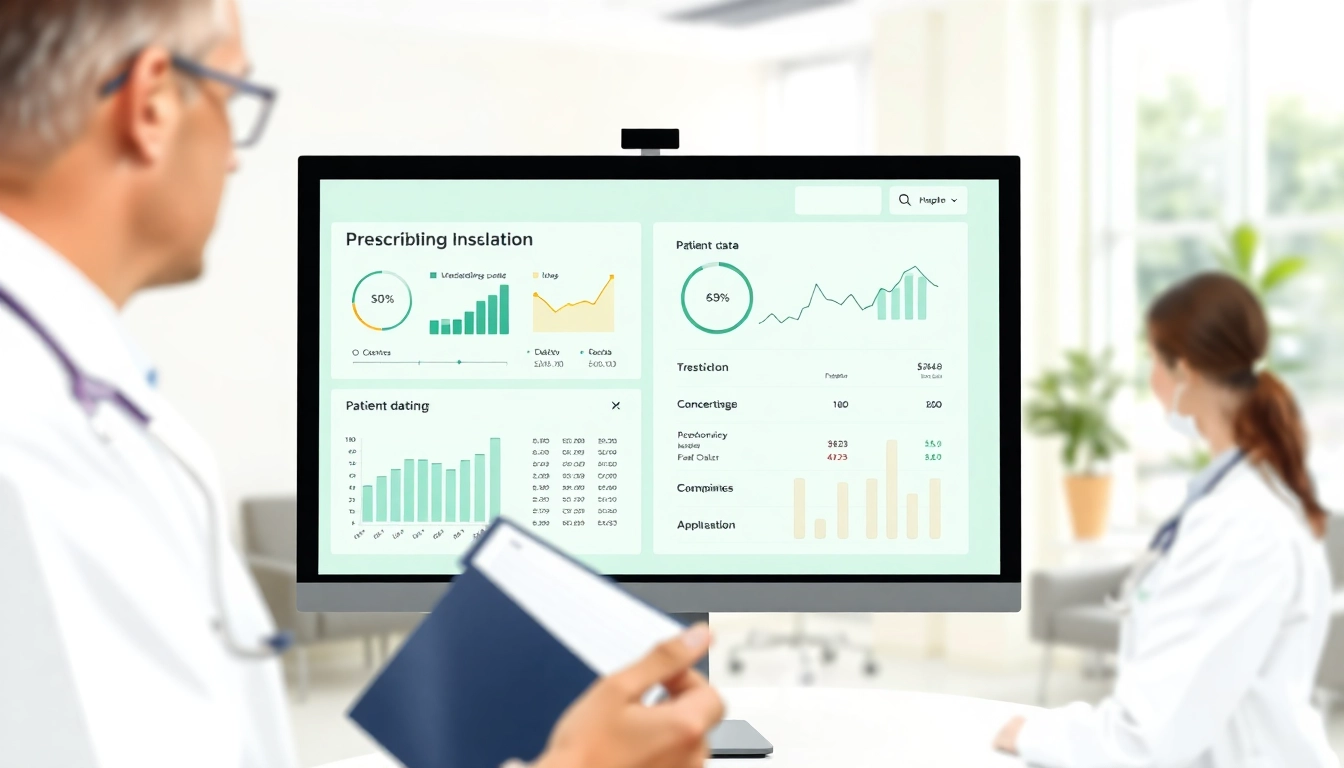Understanding Apps for Electronic Prescriptions
Definition and Importance
In the ever-evolving landscape of healthcare technology, apps for electronic prescriptions have emerged as pivotal tools for healthcare providers. These mobile applications streamline the prescription process, enabling healthcare professionals to electronically prescribe medications to patients directly from their smartphones or tablets. By replacing traditional paper prescriptions, e-prescribing applications significantly reduce errors associated with handwriting and improve medication adherence among patients. This digital transition is not merely a trend; it represents a necessary evolution in patient care designed to enhance efficiency, safety, and accuracy within the healthcare system.
Key Features of E-Prescribing Apps
E-prescribing apps come equipped with several key features that facilitate streamlined workflows and improve communication between healthcare providers and pharmacies. Some of the critical components include:
- Prescription Management: The ability to create, modify, and manage prescriptions efficiently, including refills and dosage adjustments.
- Interoperability: Seamless integration with electronic medical records (EMR) systems and pharmacies for thorough medication history access.
- Medication History Lookup: Tools that allow prescribers to access a patient’s medication history to avoid potential drug interactions and allergies.
- Secure Communication: Encrypted messaging systems that facilitate communication between healthcare providers, patients, and pharmacies.
- Patient Education Resources: Integrated materials that help educate patients about their medications, usage instructions, and side effects.
Benefits for Healthcare Providers
The implementation of e-prescribing applications carries glaring benefits for healthcare providers:
- Enhanced Efficiency: Reducing the time spent on paper prescriptions allows healthcare providers to allocate more time for patient care.
- Decreased Medication Errors: Electronic prescriptions reduce miscommunication regarding medication dosages and instructions.
- Improved Patient Satisfaction: Quick and straightforward prescription processes contribute to increased patient satisfaction.
- Cost Savings: Lowering reliance on paper and administrative processes can significantly decrease operational costs.
- Regulatory Compliance: Adhering to evolving regulations related to prescribing medications becomes more straightforward through streamlined documentation.
Top Apps for Electronic Prescriptions in 2023
Comparison of Leading Apps
With various e-prescribing applications available on the market, healthcare providers must choose one that aligns with their practice needs. Critical factors to consider when comparing applications include:
- User Interface: A clean, intuitive design that is easy to navigate enhances user experience.
- Integration Options: Compatibility with existing electronic health records ensures smoother operations.
- Support and Training: Accessible customer support resources and training programs to assist implementation.
- Reviews and Feedback: What other healthcare providers say about the app can shed light on experiences.
User Ratings and Reviews
User ratings provide insight into the functionality and effectiveness of various e-prescribing applications. These reviews often highlight both strengths and weaknesses, offering a clearer picture for prospective users. Platforms like online healthcare forums and app stores can be valuable resources for gauge opinions from other healthcare professionals.
Pricing Models and Options
Diverse pricing structures cater to many healthcare settings—from solo practitioners to large hospitals. Some common models include:
- Subscription-Based Pricing: Monthly or annual fees that provide access to the full suite of the app’s features.
- Pay-Per-Use: A fee structure based on the number of prescriptions written or patient encounters, suitable for smaller practices.
- Freemium Models: Basic functionality is offered for free, with options to upgrade for more advanced features.
Implementing Apps for Electronic Prescriptions
Steps for Successful Adoption
Implementing e-prescribing applications involves a strategic approach to ensure that the transition is smooth and facilitates an easy adoption process:
- Needs Assessment: Understand the specific requirements of your practice to select the most suitable app.
- Training Strategy: Develop a comprehensive training module for all staff involved in the prescription process.
- Pilot Testing: Run a pilot version of the application with a limited number of staff and patients to identify any issues.
- Feedback Collection: Post-implementation feedback is vital for fine-tuning processes and addressing any roadblocks.
Training Healthcare Staff
A well-executed training program is essential for ensuring that healthcare staff can utilize the application effectively. Training sessions should cover:
- Basic Functionality: Demonstrating how to use critical features of the app efficiently.
- Best Practices: Encouraging best practices in e-prescribing to enhance patient safety and compliance.
- Resources and Support: Continuous access to resources, such as FAQs and support materials, to resolve common issues they may encounter.
Integration with Existing Systems
For e-prescribing to work effectively, it must integrate seamlessly with the existing healthcare IT infrastructure. This involves:
- Data Migration: Ensuring all existing patient data is transferred accurately to prevent disruptions.
- System Compatibility: Confirming that the e-prescribing app is interoperable with other systems, such as EMR software.
- Workflow Mapping: Adjusting current workflows to incorporate the new electronic processes without impacting patient care negatively.
Challenges and Solutions in E-Prescribing
Common Issues Faced by Users
While apps for electronic prescriptions offer numerous benefits, users may encounter challenges such as:
- Technical Glitches: Unexpected system bugs or outages can disrupt workflows. Regular updates and maintenance are essential for optimal performance.
- Resistance to Change: Staff may be resistant to adopting new technology. Engage employees early by highlighting the benefits and offering comprehensive training.
- Insufficient Support: Inadequate technical support can hinder effective application use. Establishing a dedicated support line can alleviate this concern.
Regulatory Compliance Factors
Healthcare providers must ensure that their chosen e-prescribing application adheres to legal and regulatory frameworks governing electronic prescriptions:
- HIPAA Compliance: Ensure that the app meets health information privacy laws to safeguard patient data.
- State Regulations: Understanding state-specific regulations governing e-prescribing and controlled substances is crucial for compliance.
Ensuring Patient Privacy and Security
Given the sensitive nature of health data, e-prescribing applications must prioritize security and privacy:
- Data Encryption: Encrypting patient information prevents unauthorized access during transmission and storage.
- Two-Factor Authentication: Implementing additional security measures, like two-factor authentication, strengthens access controls.
- Regular Audits: Conducting periodic audits can help identify potential vulnerabilities and ensure compliance with privacy regulations.
Evaluating the Effectiveness of E-Prescribing Apps
Key Metrics for Success
To assess the effectiveness of e-prescribing applications, healthcare providers should track several key performance indicators (KPIs):
- Prescription Error Rates: Monitoring error rates before and after implementation can reveal improvements in prescribing accuracy.
- Time Savings: Tracking the time taken for processing prescriptions can help quantify efficiency improvements.
- Patient Follow-up Rates: Evaluating how many patients follow through with prescribed medications provides insight into adherence.
Patient Satisfaction and Outcomes
Patient feedback is an invaluable aspect of evaluating e-prescribing effectiveness. Gathering data via surveys and focus groups can provide insights into:
- Overall Experience: Feedback regarding the ease of obtaining prescriptions and overall satisfaction with the process.
- Adherence Rates: Tracking whether patients fill their prescriptions can highlight potential barriers to compliance.
Future Trends in E-Prescribing
The future of e-prescribing will likely be influenced by advancements in technology as well as shifts in healthcare practices:
- Artificial Intelligence: AI tools are poised to assist prescribers by flagging potential drug interactions and optimizing treatment regimens.
- Telehealth Integration: As telehealth continues to grow, e-prescribing apps are likely to incorporate features to address remote consultations effectively.
- Patient-Centric Models: Future e-prescribing applications may focus more on engaging patients directly and providing them with more control over their prescriptions.




